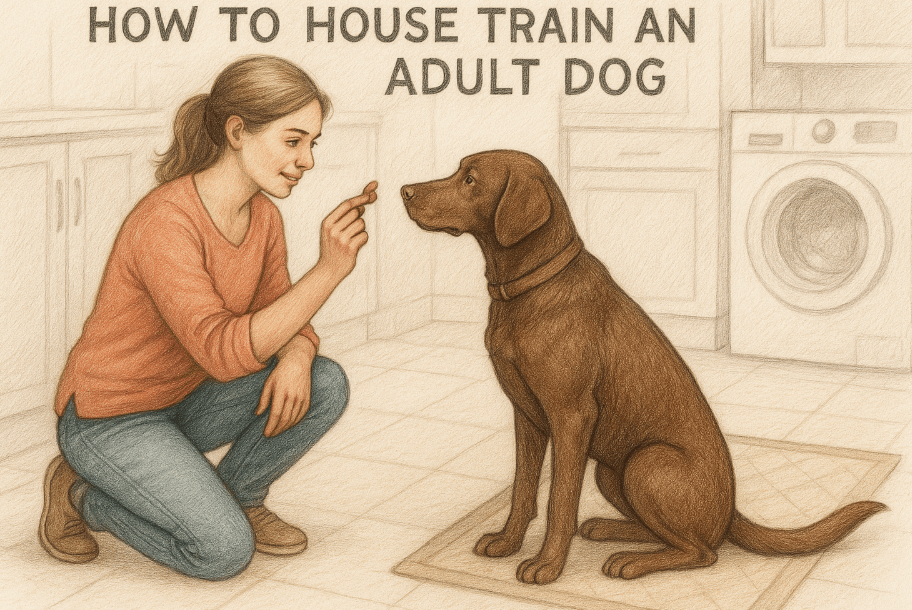Chew Bones for Puppies: Best 7 Expert Tips!
Puppies are notorious chewers, and finding the right bones can save your furniture—and your sanity—while keeping their teeth strong and gums healthy. But not all bones are created equal, and some can pose serious risks to your growing pup. From rawhide alternatives to natural options, choosing the best bones for puppies requires careful consideration of safety, nutritional value, and durability. In this blog post, we’ll explore everything you need to know about selecting the perfect bone for your puppy, ensuring they stay happy, healthy, and entertained.
Why Are Bones Important for Puppies?
Providing your puppy with appropriate bones offers more than just entertainment—it supports their overall development. Here’s why bones are essential for puppies:
Teething Relief : Chewing helps alleviate discomfort during the teething phase, typically between 3 and 6 months of age.
Dental Health : Chewing on bones can help reduce plaque and tartar buildup, promoting healthier gums and fresher breath.
Mental Stimulation : Bones keep puppies engaged, reducing boredom and destructive chewing behaviors.
Nutritional Benefits : Some bones provide essential nutrients like calcium and phosphorus, which support bone growth.
Energy Outlet : Chewing is a natural behavior that helps puppies burn off excess energy.
By offering safe and suitable bones, you’re not only satisfying your puppy’s instincts but also contributing to their physical and mental well-being.
Types of Puppy-Safe Bones
When choosing bones for your puppy, it’s crucial to select options that are safe and appropriate for their size and age. Here are some of the best types of bones for puppies:
Raw Bones : Uncooked beef or lamb bones are soft enough to chew while being rich in nutrients. Always supervise your puppy when offering raw bones.
Rubber Chew Toys : Durable rubber toys designed for puppies mimic the texture of bones and are safer than real bones for teething pups.
Dehydrated Bones : These are softer than cooked bones and less likely to splinter, making them a safer option for young dogs.
Bully Sticks : Made from dried beef muscle, bully sticks are highly digestible and provide hours of chewing fun.
Edible Dental Chews : Specially formulated dental chews clean teeth while satisfying your puppy’s urge to chew.
Choosing the right type of bone ensures your puppy enjoys the benefits of chewing without risking injury or digestive upset.
Check this guide 👉Top 5 Durable Dog Bones for Ultimate Chewing Fun!
Check this guide 👉What to Do If Your Dog Ate Rotisserie Chicken Bones: Best 7 Tips
Check this guide 👉Top 5 Ultimate Indestructible Dog Toys for Aggressive Chewers!

Type of Bone | Key Features |
|---|---|
Raw Bones | Nutrient-rich, soft, and safe when supervised |
Rubber Chew Toys | Non-splintering, durable, and great for teething |
Dehydrated Bones | Softer than cooked bones, less likely to cause harm |
Bully Sticks | Highly digestible, long-lasting, and odor-controlled |
Edible Dental Chews | Cleans teeth, satisfies chewing needs, and easy to digest |
Safety Tips for Giving Bones to Puppies
While bones can be beneficial, improper use can lead to accidents or health issues. Follow these safety tips to ensure your puppy stays safe while chewing:
Supervise Always : Never leave your puppy unattended with a bone to prevent choking or swallowing large pieces.
Choose Appropriate Sizes : Ensure the bone is large enough that your puppy cannot swallow it whole.
Avoid Cooked Bones : Cooked bones can splinter and cause injuries to your puppy’s mouth or digestive tract.
Limit Chewing Time : Prolonged chewing can wear down teeth or cause jaw fatigue; limit sessions to 15-20 minutes.
Check for Wear and Tear : Discard bones or toys that show signs of excessive wear to avoid ingestion of small pieces.
By following these guidelines, you can minimize risks and maximize the benefits of giving bones to your puppy.
Signs Your Puppy May Not Be Tolerating a Bone
Even with careful selection, some puppies may have adverse reactions to certain types of bones. Watch for these warning signs:
Vomiting or Diarrhea : This could indicate that your puppy has ingested something harmful or indigestible.
Choking or Gagging : Certain bones may be too large or too hard, posing a choking hazard.
Broken Teeth : Extremely hard bones can damage your puppy’s developing teeth.
Excessive Drooling : This may signal irritation or discomfort in your puppy’s mouth.
Lethargy or Loss of Appetite : These symptoms could indicate internal blockages or other health issues.
If you notice any of these signs, remove the bone immediately and consult your veterinarian for further advice.
Benefits of Chewing Beyond Entertainment
Chewing on bones or toys offers more than just fun for your puppy—it plays a vital role in their overall health and development. Here’s how chewing benefits your pup:
Relieves Teething Discomfort : Chewing helps soothe sore gums during the teething phase, which typically occurs between 3 and 6 months of age.
Strengthens Jaw Muscles : Regular chewing exercises your puppy’s jaw muscles, promoting healthy development.
Encourages Calm Behavior : Chewing provides a calming outlet for excess energy, reducing hyperactivity and destructive tendencies.
Improves Dental Hygiene : The act of chewing can scrape away plaque and tartar, reducing the risk of dental diseases.
Boosts Mental Focus : Engaging with a bone or chew toy challenges your puppy’s mind, enhancing cognitive development.
By understanding these benefits, you can see why providing appropriate chewing options is essential for your puppy’s well-being.
How to Introduce Bones to Your Puppy
Introducing bones to your puppy for the first time requires care and patience to ensure they enjoy the experience safely. Here’s how to do it:
Start with Soft Options : Begin with softer bones or chew toys designed specifically for puppies to avoid damaging their developing teeth.
Supervise Closely : Always monitor your puppy during their first few chewing sessions to prevent choking or swallowing large pieces.
Limit Duration : Keep initial chewing sessions short (5-10 minutes) to allow your puppy to adjust gradually.
Reward Positive Behavior : Praise your puppy when they chew appropriately to reinforce good habits.
Rotate Options : Offer a variety of bones or toys to keep your puppy engaged and prevent boredom.
By following these steps, you’ll help your puppy develop safe and enjoyable chewing habits from the start.
Common Mistakes to Avoid When Giving Bones to Puppies
While giving bones to your puppy can be beneficial, certain mistakes can lead to accidents or health issues. Here’s what to avoid:
Offering Cooked Bones : Cooked bones, especially poultry bones, can splinter and cause injuries to your puppy’s mouth or digestive tract.
Ignoring Size Guidelines : Giving bones that are too small increases the risk of choking or swallowing whole.
Leaving Puppies Unsupervised : Never leave your puppy alone with a bone, as they may bite off large chunks or choke.
Overfeeding Edible Bones : Feeding too many edible bones can upset your puppy’s stomach and lead to nutritional imbalances.
Skipping Vet Consultations : Failing to consult your vet before introducing new bones can overlook potential allergies or sensitivities.
Avoiding these common mistakes will help ensure your puppy enjoys the benefits of chewing without any risks or complications.
Frequently Asked Questions About Puppy Bones
Can I give my puppy rawhide bones?
It’s best to avoid rawhide bones as they can pose choking hazards and are difficult to digest.
How often should I give my puppy a bone?
Limit bones to 1-2 times per week to prevent over-chewing and potential dental wear.
Are antlers safe for puppies?
Antlers are generally too hard for puppies and can damage their teeth; opt for softer alternatives instead.
What should I do if my puppy swallows a piece of bone?
Contact your vet immediately to assess whether the piece poses a choking or blockage risk.
Can puppies chew on chicken bones?
No, chicken bones (especially cooked ones) can splinter and cause serious injuries.
Choosing the Best Bones for Your Growing Pup
Selecting the best bones for puppies is about balancing safety, nutrition, and enjoyment. By understanding the different types of bones available, adhering to safety guidelines, and monitoring your puppy’s reactions, you can provide them with a satisfying chewing experience that supports their growth and development. Remember, every puppy is unique, so tailor your choices to suit their individual needs and preferences. With the right bones, you’ll not only protect your belongings but also nurture your puppy’s health and happiness as they grow into adulthood.
How to House Train an Adult Dog: Best 7 Expert Tips! Discover proven strategies, tools, and techniques to successfully house train your adult dog with patience and consistency.
Romanian Dog Breeds: Best 7 Expert Tips! Discover expert advice on training, care, and living with loyal Romanian breeds for a happy, healthy companion.
What Is Debarking a Dog? Best 7 Expert Tips! Discover humane alternatives, ethical concerns, and expert advice on addressing excessive barking without surgery.
Can I Give My Dog Human Probiotics? Best 7 Expert Tips! Discover safe practices, benefits, and expert advice on supporting your dog’s gut health with the right probiotics.





